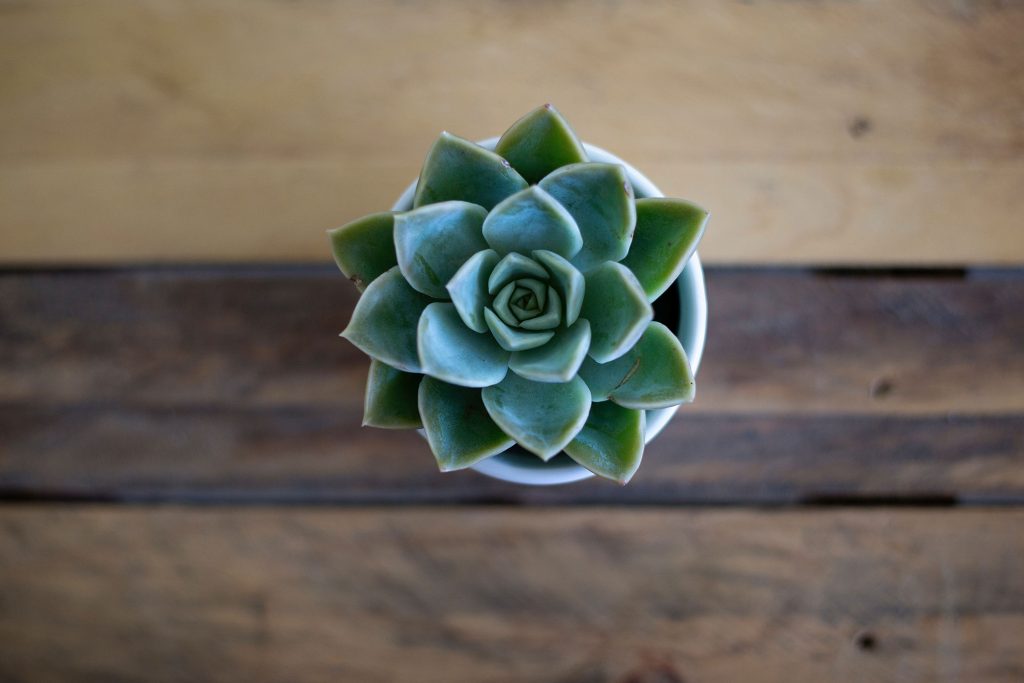Set Conscious Intentions to Simplify Life Through Minimalism

Introduction
In a world overflowing with distractions and material possessions, many individuals are seeking ways to reclaim their time and energy. Minimalism emerges as a transformative solution that encourages a more intentional approach to living. By defining conscious intentions, you can begin to simplify your life, allowing for greater clarity and focus.
Understanding minimalism isn’t just about decluttering your space; it’s about reshaping your mindset and prioritizing what truly matters. Here are a few key benefits of adopting minimalism:
- Enhanced mental clarity: Less clutter leads to less distraction.
- Improved financial health: Spending less on unnecessary items contributes to savings.
- Greater emotional well-being: Fewer possessions can lead to a lighter emotional load.
- Increased presence: Focusing on experiences over things fosters deeper connections.
In this article, we will explore the Top 5 strategies for defining your conscious intentions, empowering you to embrace minimalism in a way that aligns with your personal goals. Get ready to discover how a simplified life can lead to profound changes in your day-to-day experience.
Top 5 Ways to Define Conscious Intentions to Simplify Your Life Through Minimalism
5. Create a Vision Board
A vision board is a dynamic and creative method for setting clear intentions about the life you want to lead. In essence, it is a visual representation of your dreams, goals, and aspirations, serving as a daily reminder of where you want your simplified life to take you. To initiate this process, gather images, phrases, and symbols that reflect the minimalist ideals you aim to embody. This could include serene landscapes, quotes about simplicity, or imagery of clean, decluttered spaces.


Building a vision board is not just an exercise in creativity; it’s a strategic step toward harnessing the power of visualization. When you consistently engage with your board, examining the images and texts, you inherently set the stage for making decisions that align with those representations. For example, if your board emphasizes tranquility, you may be inspired to declutter spaces that disrupt your peace. Consistency is key; make it a habit to spend a few minutes each day meditating on your board to strengthen your minimalist intentions.
4. Declutter Your Environment
Decluttering is often the first concrete step for many on their minimalist journey. It involves a thorough examination of your possessions and reducing them to those items that hold true value. Start small to avoid overwhelm: a single drawer, a part of your closet, or one room. Each item you encounter should prompt critical evaluation—ask yourself, “Does it bring me joy?” or “Is it useful?” Essence and utility are the yardsticks for decision-making.
The act of decluttering is transformative, often leading to unexpected benefits such as a clearer mind, decreased anxiety, and enhanced focus. Simplifying your physical environment has a cascading effect on your mental state. When you eliminate the noise of unnecessary belongings, you open up space for meaningful experiences and relationships. This culling process also instills deeper appreciation and awareness of the items that truly contribute to your happiness, in line with the minimalist tenet that everything you own should have meaning and relevance.
3. Establish Daily Rituals
Daily rituals are anchors in your quest for a minimalist lifestyle, providing consistency and structure amidst life’s inherent chaos. These small, deliberate acts could include a morning meditation practice, an evening journaling session, or even dedicating a few moments to enjoy natural surroundings. A ritual is more than a routine; it’s an intentional habit that helps you maintain focus on your minimalist objectives. These rituals are not time-consuming or complex; their value lies in their regularity and ability to cultivate mindfulness.
For instance, a morning ritual may encompass brewing a cup of tea and sitting in silence, allowing you to set intentions for the day. In the evening, reflection and gratitude journaling can reaffirm your minimalist goals by identifying what you cherish and what could be surplus. By prioritizing rituals that foster calm and clarity, you are better equipped to manage stress and distractions, thereby underscoring your commitment to a simplified lifestyle.
2. Set Clear Intentions
Defining clear, actionable intentions is a cornerstone of adopting a minimalist lifestyle. The key lies in avoiding ambiguity. Translate broad desires into concise and concrete goals. Instead of the vague “I want to be more organized,” aim for “I will declutter my workspace by removing all non-essential items by next month to enhance productivity.” A structured approach such as the SMART goals—Specific, Measurable, Achievable, Relevant, and Time-bound—serves as a blueprint for converting intentions into attainable targets.
Once your intentions are crystallized, devise a plan to achieve them. Document these goals and monitor your progress methodically. Sharing your intentions with friends or family members provides a support network, holding you accountable and reinforcing your commitment. The process naturally aligns with minimalist philosophy by guiding your focus toward activities and pursuits that genuinely enrich your life, all the while trimming excesses that detract from it.
1. Embrace Mindfulness
Mindfulness stands at the forefront of practices for cultivating a minimalist lifestyle. It involves being present in the moment and profoundly aware of your surroundings and feelings. By adopting a mindful approach, you can sift through life’s distractions and zero in on what truly matters, effectively pruning away the superfluous. This practice also aligns your actions with your core values, allowing you to maintain integrity and intention in all life areas.
Engaging with mindfulness could mean dedicating a part of your day to quiet reflection, observing your thoughts without judgment, or practicing mindful breathing exercises. This enhanced awareness aids in decision-making by filtering out the noise and facilitating focus on meaningful endeavors. Embracing mindfulness as a daily practice ensures that your minimalist intentions are not just conceptual ambitions but lived experiences, thus transforming your life into a testament to simplicity and deliberate choice.
In conclusion, the journey toward a minimalist lifestyle is transformative and immensely rewarding. By implementing the strategies outlined—creating vision boards, decluttering, establishing daily rituals, setting clear intentions, and practicing mindfulness—you embark on a path toward intentional living. This transformation fosters greater clarity, peace, and focus, allowing you to engage more profoundly with life’s significant aspects. Commence this journey today and discover the profound impact a minimalist mindset can have on your life.
The essence of conscious intentions lies in their ability to infuse life with purpose and direction. Clarity of purpose enables individuals to identify what they value most, which can illuminate various aspects of life, from personal relationships to career choices. When you approach life with a defined purpose, the distractions of extraneous commitments and material possessions that do not serve your goals can be effortlessly discarded. Additionally, enhanced decision-making flows naturally from a minimalistic mindset. When faced with choices, having a clear understanding of your intentions allows for swift resolutions without the paralysis often associated with too many options. This streamlined approach equips you with the ability to say “no” to the non-essential and gravitate towards experiences and commitments that resonate with your elevated priorities.Moreover, adopting a minimalist lifestyle significantly impacts well-being. Studies indicate that environments filled with unnecessary clutter can lead to increased anxiety and stress. Conversely, intentionality in life fosters mental clarity, enabling individuals to cultivate emotional resilience. When your mind is not bogged down by excess baggage, you can enjoy a more balanced and fulfilling everyday experience.Budget management is another area where the positive effects of minimalism become apparent. By focusing on what truly matters, there’s a natural inclination to curtail spending on fleeting desires and instead invest in experiences that create lasting memories. This shift in perspective transforms financial habits, leading to a more sustainable, rewarding lifestyle that prioritizes personal growth over mere accumulation.
Frequently Asked Questions about Defining Conscious Intentions for a Minimalist Lifestyle
What does it mean to set conscious intentions in the context of minimalism?
Setting conscious intentions involves making deliberate decisions to align your actions with your core values and priorities. In the context of minimalism, it means choosing to simplify your life by reducing distractions and focusing on what truly matters. This practice encourages a deeper understanding of your needs and desires, leading to a more meaningful and fulfilling life. Conscious intention-setting can help declutter not only physical spaces but also mental and emotional landscapes.
How can defining intentions help in simplifying life through minimalism?
Defining intentions helps identify what is essential, allowing you to let go of the superfluous. By clarifying your priorities, you create a more focused approach to life, making it easier to eliminate unnecessary possessions, commitments, and stressors. This intentional approach promotes personal growth and aids in cultivating a balanced lifestyle. When you know your intentions, you are less likely to accumulate things that don’t serve your purpose, thus achieving simplicity and clarity.
What are some practical steps to start setting conscious intentions?
Begin by reflecting on your core values and how they relate to different areas of your life, such as work, relationships, and personal growth. Write down specific goals that reflect these values and consider daily practices that can support them. Engage in regular review sessions to assess your progress and make necessary adjustments. One effective technique is to adopt a mindfulness practice, which can help you stay present and aware of your intentions. Keeping a journal can also be a powerful tool for tracking your journey and maintaining focus on your minimalist path.
Are there common challenges people face when trying to live intentionally?
One common challenge is societal pressure to conform to consumerist norms, which can be at odds with minimalist values. People may also struggle with letting go of possessions due to sentimental attachments. Additionally, it can be difficult to maintain focus amidst daily distractions and the rapid pace of modern life. To overcome these challenges, it’s important to establish strong personal boundaries, practice self-compassion, and seek community support. Remember, living intentionally is a continuous journey, not a destination.
Can minimalism and setting intentions be beneficial for mental health?
Yes, embracing minimalism and setting conscious intentions can have positive effects on mental health. By decluttering physical and mental spaces, you reduce stress and anxiety, paving the way for a calmer, more peaceful mindset. The practice encourages intentional living, which can lead to increased self-awareness and satisfaction. Moreover, prioritizing quality over quantity in various aspects of life can deepen connections and create a sense of purpose, contributing to overall well-being.
Conclusion
Embracing minimalism through consciously defined intentions is not just about reducing clutter; it’s about crafting a life filled with purpose and clarity. By prioritizing what truly matters, we give ourselves the freedom to focus on what genuinely enriches our lives. This intentional approach helps strip away the unnecessary and channel our energies into areas that foster growth and happiness.
One of the main takeaways from discussing intentionality in minimalism is the power it gives us to control our environment and mindset. Establishing clear intentions leads to a more organized and tranquil lifestyle, allowing us to engage fully with endeavors that align with our core values. Through this process, we gain understanding of our needs and desires, providing a road map for simplicity and contentment.
The principles of intentional minimalism offer a fresh perspective on personal organization. By decluttering our physical and mental spaces, we can breathe easier and cultivate a lifestyle conducive to productivity and well-being. This holistic approach shines a light on the depth behind minimalism, transforming it from a superficial trend into a lifestyle philosophy that promotes genuine transformation.
Moreover, intentional living can encourage individuals to seek out further information, exploring the impact of minimalism on different life areas such as relationships, career, and mental health. As you continue your journey towards simplicity, consider continually reassessing and aligning your intentions with your life goals. The path to a minimalist lifestyle is paved with conscious choices, introspection, and a commitment to living with purpose. By doing so, you can create a more meaningful and fulfilling existence, resonating deeply with the essence of minimalism itself.


